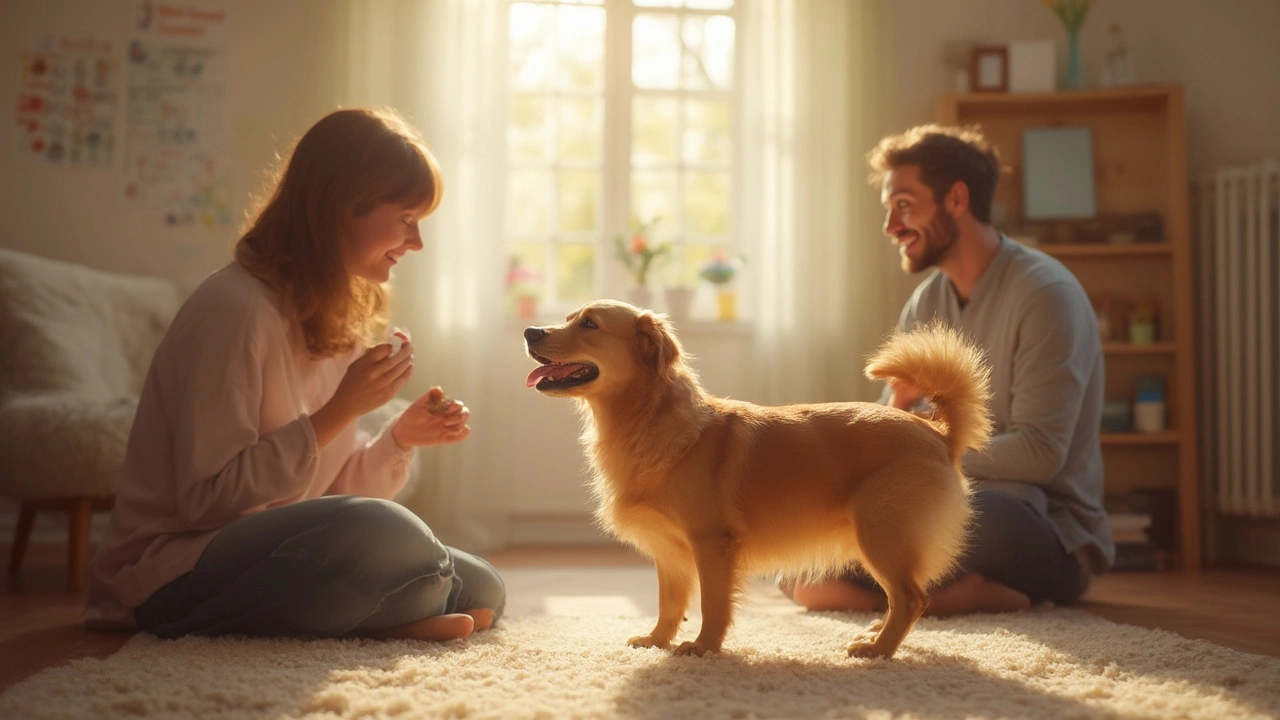Humane Dog Behavior Solutions: Kind Ways to Train Your Dog
Got a puppy that jumps, a hound that pulls, or a senior that’s suddenly anxious? You don’t need harsh collars or punishment to fix it. With a little patience and the right humane techniques, you can reshape the behavior while keeping your dog’s trust intact. Below we break down why gentle training works and give you easy steps you can start using today.
Why Choose Gentle Training?
Dogs are social learners—they watch how we act and respond to our cues. When you use positive reinforcement, you’re speaking their language. Reward‑based methods boost confidence, reduce fear, and create a clear connection between the action and the reward. That means fewer barking, less chewing, and a calmer companion without the stress of fear‑based tools.
Science backs it up. Studies show dogs trained with treats, praise, or play learn faster and retain skills longer than those taught with shock or choke collars. Plus, a relaxed dog is a healthier dog, which means fewer vet visits and more fun walks.
Practical Humane Techniques
1. Capture and Reward. Instead of teaching a new behavior from scratch, notice when your dog does something you like—like sitting calmly by the door—and immediately give a treat or verbal praise. Over time the dog repeats the calm behavior because it’s linked to a reward.
2. Clicker Training. A clicker makes a sharp sound the instant your dog performs the right action. Pair the click with a treat, and the dog learns that the click means “good job.” The click is a precise marker, so you don’t have to guess when the behavior happened.
3. Set Up Success. If your dog pulls on the leash, use a front‑clip harness and start walking in a low‑distraction area. Reward the dog for staying beside you. Gradually add distractions once the leash‑walking stays solid. You’re shaping the behavior step by step, not punishing mistakes.
4. Time‑Limited Ignoring. For attention‑seeking barking or jumping, turn your back and stop talking when the dog misbehaves. As soon as they stop, give a cue like “quiet” and reward the calm moment. The dog learns that being quiet earns attention, not the noise.
5. Enrich the Environment. Boredom fuels many behavior issues. Rotate toys, add puzzle feeders, and schedule short training games throughout the day. A mentally stimulated dog is less likely to dig, chew, or become overly aroused.
Remember to keep sessions short—five to ten minutes—and end on a positive note. Dogs thrive on consistency, so practice daily, even if it’s just a quick “sit” before dinner.
Finally, be patient with setbacks. A slip isn’t a failure; it’s a chance to adjust the timing of your reward or the difficulty of the task. By staying calm and consistent, you reinforce the idea that you’re a safe guide, not a threat.
Humane dog behavior solutions aren’t just about fixing problems—they’re about building a deeper bond built on trust and respect. Try one of the techniques today, and watch your dog respond with confidence and joy. Your pup will thank you with wagging tails, not whining or destructive habits.

Gentle Alternatives to Bark Collars: Humane Ways to Manage Dog Barking
Explore bark collar alternatives—from training hacks to calming products. Learn humane, effective, science-backed ways to manage your dog's barking.
View more